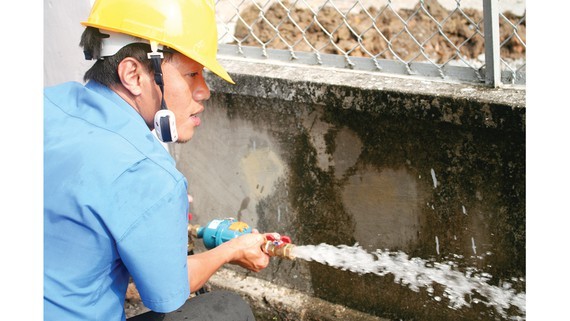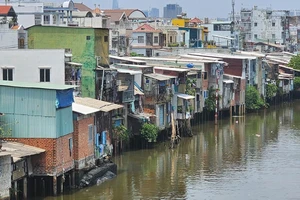
At a seminar on clean water supply in HCMC in the phase of 2019-2035, Mr. Hoan said that the city has made efforts so that 100 percent residents in the city can access and use clean water. Still, supply has failed to meet demand of such a big city.
At present, the city faces difficulties in controlling raw water quality. Specifically, water treatment plants are now exploiting raw water from Saigon and Dong Nai rivers. However impacts from socioeconomic development have caused heavy water pollution along the valley of these rivers.
Locating in the end of the river valley, HCMC has been unable to control the pollution. On the other hand, climate change has caused negative impacts on raw water quality. These factors would affect the city’s water supply safety in the future, he worried.
Sharing the concern, Mr. Sytze Jarigsma, former resident project manager of the Dutch Utility Support Program, emphasized the need of planning the water supply industry. According to him, the city is using raw water from rivers and underground sources to produce clean water. However underground exploitation will gradually end to limit depression.
Meantime, the water quality in the Saigon river is not good due to pollution and salt intrusion. The city can continue exploiting the remaining source from the Dong Nai river but this source will also be affected by salt penetration due to climate change. Hence, the city should consider taking raw water from Dau Tieng and Tri An reservoirs according to the proposal by Japan International Cooperation Agency.
Aside from that, the city should build water tanks near intake points to keep water from 1-20 days to cope with salt intrusion. Solutions comprise salty water dilution, desalination, wastewater treatment, rainwater collection and influence on water consumption demand through water price.
Ms. Nguyen Thi Thanh Mai, chairwoman of Refrigeration Electrical Engineering Corporation, suggested that the city authorities should work with relevant provinces on solutions to ensure the quality of raw water. Focusing on raw water source protection will be much better than focusing on water treatment, she added.
At the seminar, delegates talked about drinking water taps. That places requirements for not only water treatment but also pipe system. Currently, the city has many old pipes making it difficult to meet quality standards of drinking water.
A water supply enterprise said that supply of drinking water tapes is not an easy mission with strict quality standards and regulations. Another obstacle is from investment capital. Water price in HCMC is much lower than that in many places in the region and it has not been adjusted for a long time. As a result, the water supply industry is short of funds for development investment. The low water price has also raised difficulties in calling for investors because of difficult payback ability.
From another aspect, director of HCMC Department of Construction Le Hoa Binh said that the high ratio of water loss greatly impacts water price. The city is working with foreign partners to reduce water loss volume.
Sharing experiences in water supply for Manila, Mr. Arnold Jether A.Mortera from Filipino Manila Water Company said that at first the company also met difficulty from old water supply system which caused water loss. To deal with the issue, the company intensified management over water supply in small areas to supervise all daily happenings in these areas. Therefore, the ratio of water loss reduced from 63 percent in 1997 to 10 percent now. This has helped the company meet increasing demand from customers without building new water plants.
























